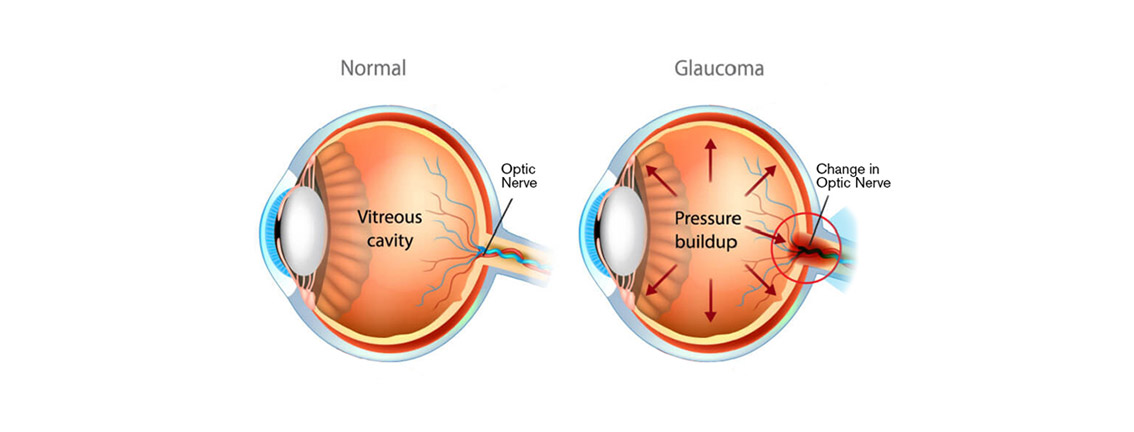Glaucoma and Vision Loss
Glaucoma is often referred to as a silent thief of vision because many people with glaucoma do not know that they have it. It is a group of diseases that affect the optic nerve in a way that leads to a loss of peripheral vision. Glaucoma currently affects 78 million people worldwide, and more than 450,000 Canadians. It is estimated that worldwide, nearly half of those who are afflicted do not know that they have glaucoma.

Although there are several types of glaucoma, the most common form of glaucoma, primary open angle glaucoma, does not have any symptoms in its earliest stages. This form of the disease accounts for approximately 90 percent of all cases of glaucoma. The biggest risk factor associated with primary open-angle glaucoma is increased pressure in the eye. The increased pressure is thought to put mechanical stress on the back of the eye resulting in damage to the optic nerve. But having low pressures does not guarantee that an individual will not develop glaucoma as we know that people who have low pressure can also develop what is referred to as low tension glaucoma, a less common form of the disease. Research continues to better understand this form of the disease, but one theory is that the blood supply to the optic nerve is inadequate which leads to progressive nerve damage.
We know that there are many other risk factors for glaucoma including increased age, being of African American, Asian or Hispanic descent, and having a family history of glaucoma. Past eye trauma or surgery can put a patient more at risk, along with cardiovascular diseases such as high or low blood pressure, heart disease, and diabetes. There are some anatomical variations in the eye, such as having thin corneas, or narrow angles, that are also considered risk factors. These variations can only be evaluated during an eye examination.
If left untreated all types of glaucoma will lead to the same outcome, a progressive loss of peripheral vision. However, some of the less common subtypes of glaucoma (10 percent of all glaucomas) may have some of the following symptoms as well: blurry vision, eye redness, eye pain, light sensitivity, haloes around lights, tearing, nausea, and headaches. The only way to know for sure whether these symptoms are associated with glaucoma or some other cause is through an eye examination.
Although people with early-stage glaucoma have no symptoms, it can be detected during a routine eye exam. During an eye exam, the pressure inside the eyes is measured. Using special equipment, the optometrist or ophthalmologist looks directly inside the eye to inspect for any damage to the optic nerve and retinal layers. Other specialized testing may be done to quantify any functional vision loss, and imaging of the optic nerve may be done to determine whether any structural changes have taken place.
Once detected glaucoma is treatable, but not curable. For all forms of glaucoma, the goal of treatment is to reduce the pressure in the eye, which lessens the force pressing on the optic nerve and thereby reducing nerve damage. There are several classes of medications, in the form of eye drops, that can be used to reduce eye pressure. Different classes of medications can also be used together simultaneously to help control the pressure if one medication is not effective on its own. There are also several different laser treatments and surgical procedures that can help drain fluid out of the eye and decrease the pressure mechanically as well.
Treatment with daily eye drops or surgery is usually effective at maintaining vision. Early detection and treatment are crucial in preventing vision loss. As the condition progresses, if left untreated it ultimately leads to a loss of peripheral vision and eventually tunnel vision. Once vision is lost due to glaucoma, it cannot be restored. Since the disease can progress or change silently, compliance with treatment and routine eye exams are essential. Routine eye exams with your optometrist are highly recommended to screen for glaucoma.


